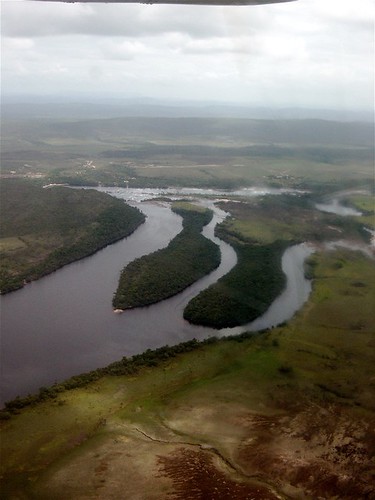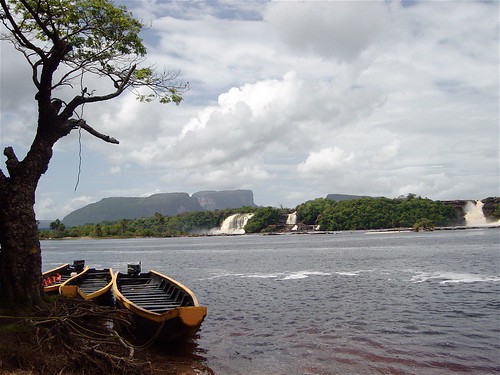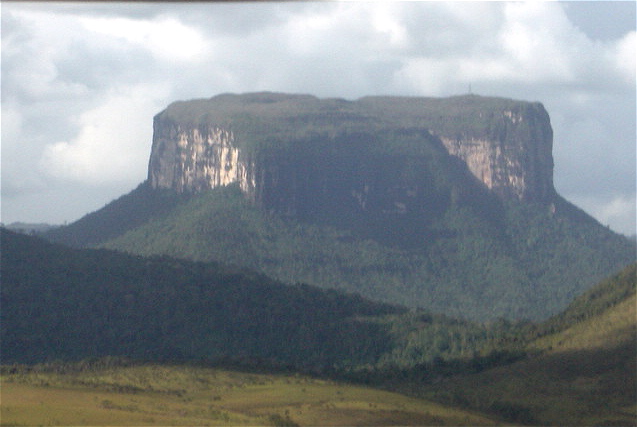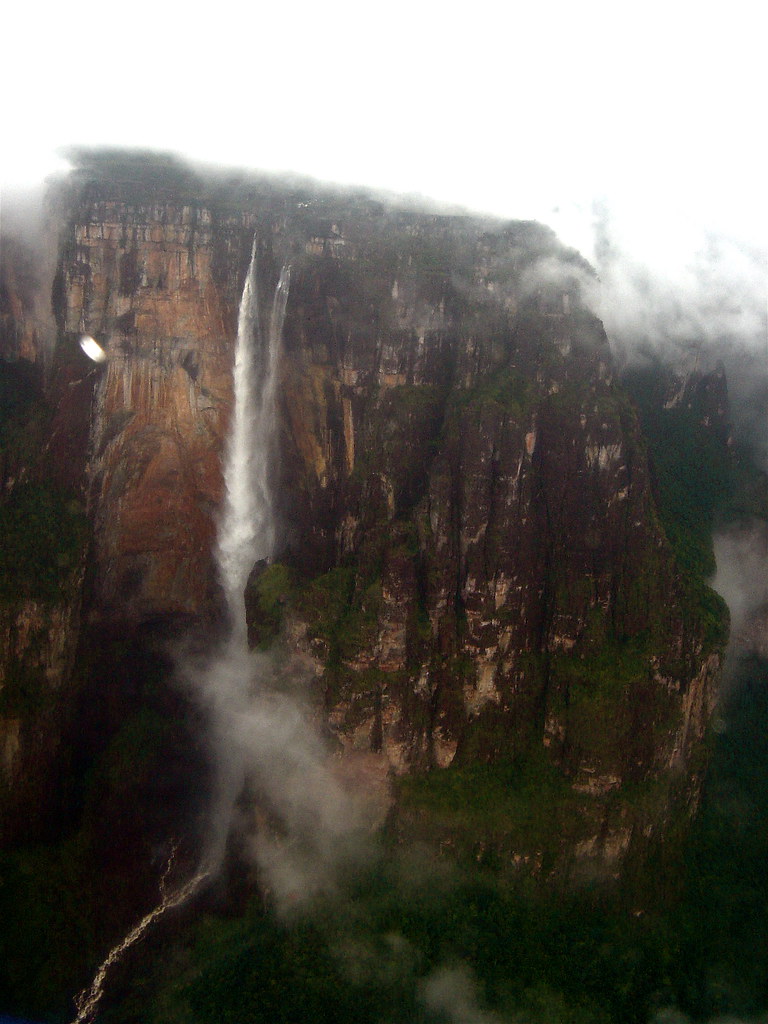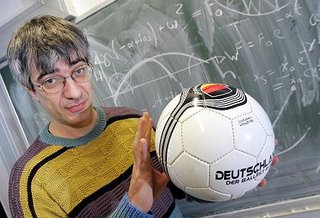
This is Physics Professor Metin Tolan, of the University of Dortmund. Dr. Tolan gives lectures about the physics of football to packed audiences, where he explains how banana kicks work, and often spins off about the impossibility of certain things in film (such as James Bond magnetically undoing zippers, or certain aspects of Star Trek).
Lately, he has been on dozens of interviews for news shows all over the world. He has done a statistical calculation with some interesting results, especially during this football-crazed time, and epecially for his football-crazed nation.
It turns out that Bessel functions are a good fit to professional football (soccer) scoring statistics, and Tolan has used them to calculate the odds for the current World Cup teams. After analyzing thousands of games, it seems that the scoring rate of national teams is not particularly dependent on who is on the field, who is the coach, or several other factors one might think are important (ssshhh, don't tell the players, agents or fans). As Kim Allen points out in his blog on Tolan, "In a single sweep, he dismisses the entire field of sports psychology." Apparently, the two major contributors to scoring rate are nationality and whether you are playing at home or not.
Tolan carried out two calulations: one to get the odds of winning for each team at this particular World Cup, and one to match the performance of the German team over time. His match to Germany's past and predicted performance is obviously what is catching the attention of the Germans, as in this graph of the function:
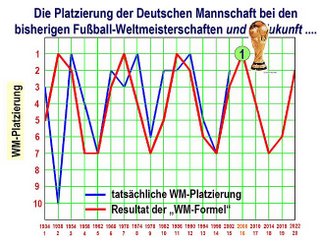 Where blue is the actual placing of the team over all the past World Cups, and red is the result of the WM-Formal model in this crude graphic of Germany's team placement over time. I have several issues with this whole approach (as does Tolan himself, he admits freely), but of course the press brushes off these cautions. "Physics ensures the Cup is ours!"
Where blue is the actual placing of the team over all the past World Cups, and red is the result of the WM-Formal model in this crude graphic of Germany's team placement over time. I have several issues with this whole approach (as does Tolan himself, he admits freely), but of course the press brushes off these cautions. "Physics ensures the Cup is ours!"The interesting part for me was that he had approximated each team as a Poisson emitter (kind of like a radioactive element). Without the home team advantage, Germanium has only a 10.69% chance of winning, while Brazilium is the favourite, with a 15.56% chance. Now, the home team advantage is somewhere between 1 and 2 goals per game, which increases Germany's chances to 33.18% if the advantage is one goal, and to a whopping 56.39% chance if the advantage is an unlikely 2 goals per game. Those are betting odds!
And Tolan, like any competent statistician, has an interest in gambling. He not only deals with World Cup football, but he looks at things like card shuffling machines for weaknesses. He says his money is on Germany - but then he also knows his emotions are involved, and those tend to cloud any results from beautiful formulae. ...he has also lost bets too, losing a favourite football uniform from a Bavarian football team to a friend.
And those formulas on the chalkboard behind him? Real - but probably only because Spiegel took the photo on Tolan's home turf. There are some other efforts to get real math out into public view - the current CBS show Numb3rs, where my old statistics prof Gary Lorden serves as a consultant to ensure the references to math in the script and on the chalkboards in that show are correct. Gary also had an interest in gambling - enough to be blacklisted at every major casino in Vegas for his successful counting schemes, based on... math.
OK, I've got my lucky Brasil #9 Ronaldo jersey on (four stars only, from before the 2002 WC win), and I'm bouncing up and down waiting for the kick-off whistle. And I've got my bets backed up by a formula. Hope I don't lose that whole dollar...
Theme spotted in Toni Feder's Physics Today 26 June article, and supplemented by:
- A Spiegel article (in German)
- An interview on "As it Happens" from CBC Radio: http://www.cbc.ca/radioshows/AS_IT_HAPPENS/20060608.shtml
(...and you thought the James Bond link was going to be video, and not just a German podcast. Heh.)















